Autonomous gasification of a private house
Living in an ecologically clean remote place and working in the city is pleasant and healthy. Only we can not imagine our life without the benefits of civilization – electricity, water, sewage and heating are not from the stove. And if your paradise on earth surrounded by nature is located too far from the main engineering highways, when centralized electrification and especially gasification of a private house seem like a pipe dream, an autonomous gas supply system will solve all your everyday problems and provide 100% the level of familiar urban comfort.
Content
- The device of the autonomous gas supply system
- Designing a plan for future work
- Installation and commissioning of a gas tank
The device of the autonomous gas supply system
Autonomous gas supply is not a sensation and has long been used in large and small towns, where the main gas pipelines have not yet been connected. Residents of private houses in non-gasified cities and villages use gas only for cooking, connecting cylinders with a capacity of 50 or 80 liters to the stoves and filling them with gas every 2-3 months, and gasification of the apartment building is provided from a special underground tank – a gas tank, serviced by the regional regional gas service. Residents of houses too far from civilization still had to do without gas stoves, not to mention heating: the cost of delivering a gas bottle could be several times the cost of gas in it.
Today, industry produces gas tanks of a wide range of capacities, and autonomous gasification of a private house is technically accessible to everyone, wherever this house is located. To do this, it’s enough to select and install a tank on the site corresponding to the needs and area of the house and replenish the gas in it as necessary.
A gas tank is a cylindrical tank designed to store liquefied petroleum gas (LPG), in practice it is a mixture of propane and butane gases. Externally, the tank resembles a railway tank, made of cold rolled steel 10 mm thick, has its own unique serial number and is designed for a pressure of 1.6 MPa. The range of gas tank capacities is from 2700 to 20 000 cubic meters. m. Tanks of 2700 cubic meters. m designed for gas supply to small houses up to 200 square meters. m., and a capacity of 20,000 cubic meters. m can be used in gas supply systems of buildings with an area of over 1000 square meters. m., including apartment buildings.
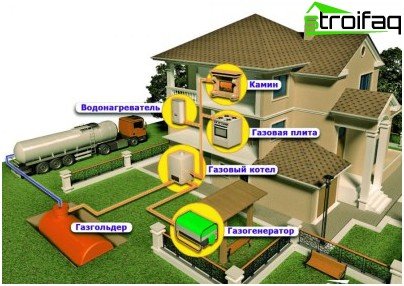
Gas holder – an improved alternative to gas cylinders, allowing you to enjoy all its advantages away from civilization
The gas mixture is stored in the tank in a liquefied state and, evaporating, is piped to the household appliances located in the house. Gas reserves in gas tanks are replenished with a gas truck 1-3 times a year, depending on the intensity of gas use.
The convenience and advantages of an autonomous gas supply system are undeniable:
- durability – the equipment practically does not wear out;
- independence from main gas supply systems;
- profitability in comparison with heating systems using liquid fuel or electric, the payback period of a gas tank is not more than 3 years;
- environmental friendliness – when burning, combustion products harmful to health are not emitted, and spontaneous gas leakage is practically excluded;
- individual design of the gas supply system, taking into account the landscape features of the site;
- simplicity and speed of installation;
- the ability to connect additional gas equipment without coordination in municipal licensing authorities, including a gas generator for autonomous power supply at home;
- infrequent replenishment of gas in the tank as it is used.
Designing a plan for future work
Even if you consider yourself a genius who is capable of solving technical problems of any degree of difficulty, gasification of a private house with your own hands is a priori excluded. Gas supply is a specific area and an activity license is required.
Important!
Get only certified equipment for autonomous gas supply from well-known suppliers with a good reputation. When choosing an installation company, check that it has a license to carry out work related to the gas supply of residential facilities.
The organization of autonomous gas supply systems is carried out by specialized regional gas divisions and private companies. Both of them obey the general safety rules, but they have different working schemes..
The services of a private company may cost more, but it will complete the entire turnkey work: prepare and coordinate the necessary documents for the gasification of a private house in the authorities, offer an optimal set of equipment in terms of functionality and cost, perform its installation, and carry out commissioning.
When applying to the state structure of regional gas, the following procedure for the gasification of a private house is provided.
The homeowner applies to the local branch of the GDS with a statement on the development of technical specifications (TU) for the gasification of the house and the installation of the installation for storing liquefied gas, enclosing copies of documents:
- the passport;
- title document to the land plot and its situational plan;
- thermotechnical characteristics of the heating system needed to determine the boiler capacity and annual gas consumption.
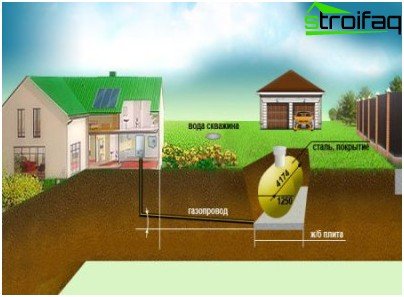
Toleric conditions take into account the basic rules of gasification of a private house, ensuring fire safety standards
After paying the advance payment to assess the possibility of installing a gas tank, a specialist of the organization leaves for the site. TU take into account the following gasification rules of a private house, ensuring fire safety standards:
- distance from residential buildings – from 10 m;
- distance from a well, a well, another reservoir – from 15 m;
- distance from non-residential utility structures and trees – from 5 m;
- distance from the fences of the site – at least 2 m;
- the distance from the transmission line – not less than half the height of the support;
- the possibility of arranging a driveway for a gas truck equipped with a tank.
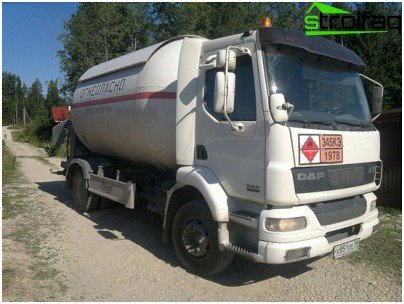
The gasification project of a private house must necessarily provide for the possibility of arranging a driveway for a gas truck equipped with a tank
The development of technical specifications also includes studies of soil corrosion activity and the level of stray currents. With a specific soil resistance of less than 50 Ohm / sq.m and an average cathode current density of more than 0.05 A / sq. m. the expert will decide on the possibility of using a tank with enhanced galvanic or cathodic protection, which will entail additional one-time costs.
Attaching the TU to the next application, the landlord turns to a licensed design organization that is developing a gasification plan for a private house containing the following information:
- general plan of the site;
- tank specifications;
- technical solutions for grounding systems, lightning protection, chemical protection;
- technical characteristics of the evaporator plant and condensate collector, if provided;
- external gas pipeline plan.
The document must necessarily be agreed upon in the local gas supply, electricity, architectural supervision services, and receive independent expert appraisals of the fire and environmental protection authorities. In conclusion, the project of gasification of the house is subject to registration in the territorial unit of Rostekhnadzor, which within a month issues an official document – a building permit.
Installation and commissioning of a gas tank
Having received a package of permits, you can buy a gas tank and conclude an agreement with the installation organization.
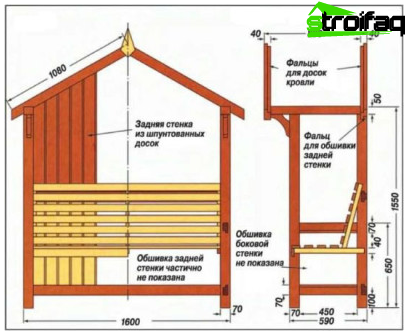
When concluding an agreement for the installation of equipment for autonomous gasification, be sure to check if the company has the appropriate license
Independent purchase of capacity is unlikely to save money: as a rule, installation companies give discounts to customers who order from them both the purchase of equipment and its installation. You can slightly reduce your costs by completing the necessary earthwork yourself in full accordance with the project. The final cost of gasification of a private house depends on the length of the gas pipeline, the location of the entire system, the type and volume of the vessel, the level of complexity of the work performed and the number of objects connected to the system.
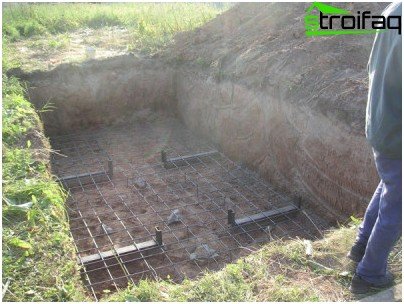
The place to install the tank is best prepared in advance.
Installation of an autonomous gas supply system in advance prepared territory is usually carried out no longer than two to three days. Then, in the presence of representatives of Rostekhnadzor and regional gas, the installation is tested for leaks and after receiving a positive conclusion from them, the tank can be manually covered with sand.
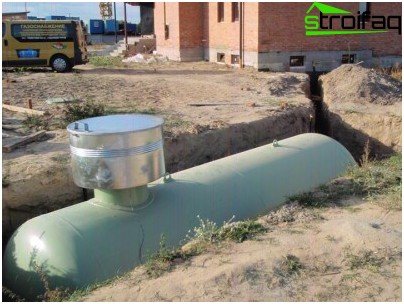
Gas holder installed. After checking for leaks in the presence of inspectors from Rostekhnadzor and regional gas, it can be covered with sand and taken in gas for 2-3 weeks.
An acceptance certificate for the property is signed between the contractor and the homeowner and a service contract is concluded for the system. If the construction of the internal gas pipeline and its connection to the main equipment is carried out by another organization, it is necessary to obtain a civil liability insurance policy and draw up an act on the division of responsibilities. Based on the statement of the homeowner and the package of listed documents attached to it, Rostekhnadzor puts the system on record and issues a permit to refuel the gas tank with liquefied gas.
Having overcome all doubts and difficulties, the autonomous gas supply system at home has taken its rightful place on your site. It remains to familiarize home with safety regulations and you can enjoy all the pleasures of urban comfort away from the noise and smog of the metropolis.






